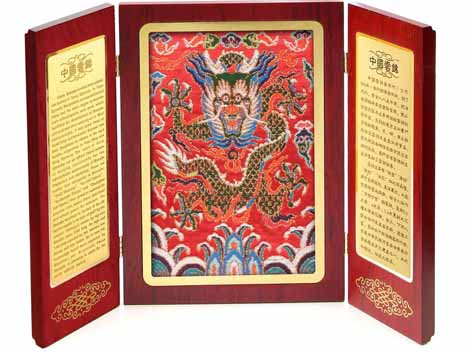
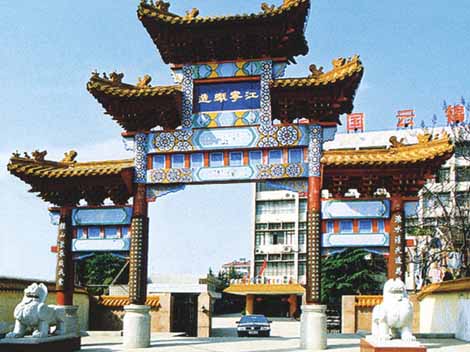
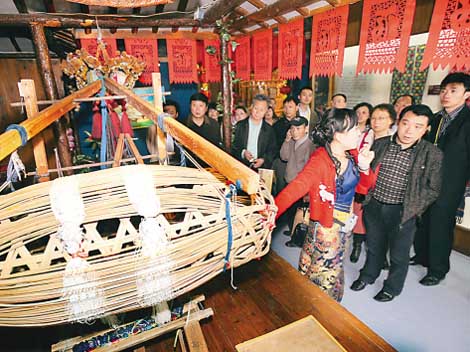
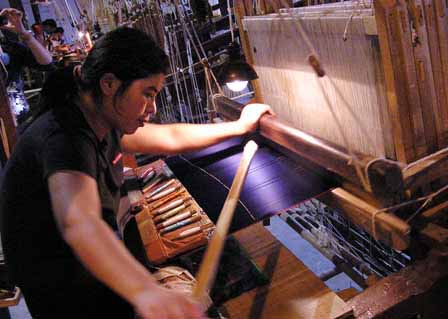
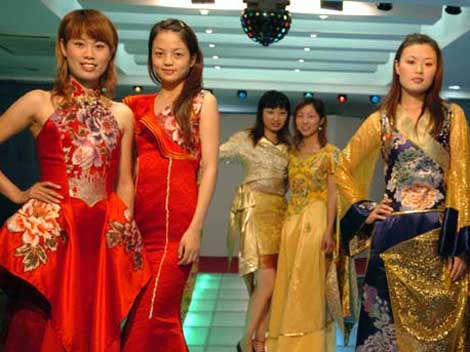
Nanjing cloud-patterned brocade got its name from Yun that means clouds, since the fabrics is as beautiful as the splendid clouds in the sky, and has got a history of nearly one thousand years.
Among all the ancient fabrics, silk fabrics known as "Jin" represents the top industrial arts. Furthermore, Nanjing Brocade concentrates all the advantages of advanced silk fabrics arts and technology of ancient dynasties and ranks first in quality among the three well-known categories of silk fabrics. It had been used as tributes to the loyal families in the three dynasties of Yuan, Ming and Qing. Owing to its rich cultural and scientific connotation, it is honored by experts as "the last milestone in the technological history of Chinese ancient silk fabrics". It is acknowledged by public as "oriental treasure", "China's wonder" and is also one of the rarest historical cultural legacies in China and the world.
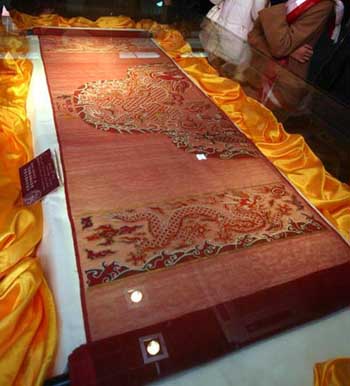
In the prime of the production of Brocade that was regarded as China's noblest silk fabrics and the symbol of the highest technology in Chinese silks, Nanjing enjoyed over thirty thousand looms and nearly three hundred thousand persons made living on the trade, which was the Nanjing's biggest handicraft industry at that time and occupied a certain position in the Chinese history. Brocade is not only the pride of the people of Nanjing but also the pride of mankind's civilizations.
The Brocade described as "an inch of the silk fabrics equals to an inch of gold" by the ancient Chinese is woven by big size wooden looms 5.6m long, 4m high and 1.4m wide operated by two workers, one above and one below. Its production sequence can be depicted as the current computer program language, and it fully embodied the talent of our ancestors.
"Pattern twining and base weaving" is equivalent to computer software design. It turned the fabrics pattern into program language using the principle of ancient method of "notes keeping by way of rope knotting", and then put the program on the loom for weaving. This is a very complicated technology, actually a creative designing process of stored pattern programs with silk thread as basic material. The designer is required not only to display the delicate pattern changes on each thread according to fabrics' specification requirements and calculated results of detailed dimensions in inch, centimeter, millimeter, etc., but also to unify the miscellaneous colors to the maximum, so as to compile a program file that the weavers can read and work on the looms.
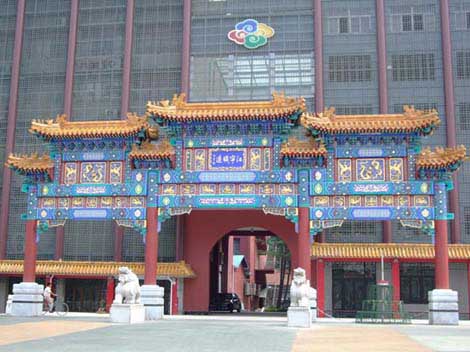
The person sitting on the loom is known as "thread puller". All his work to do is to pull the thread in line with threading sequence, corresponding to computer keyboard typing. The person sitting on the lower part of the loom is called "weaver". With the skill of "passing longitude and cutting woof"(the woof consists of connected colorful fine hairs), he twines the pattern and weaves the materials into Brocade with golden and colored threads. The woven piece in front of him can be regarded as computer screen. Up till now the technology hasn't been enabled to be replaced by machines yet. The weaving technology of Brocade is exceedingly complex and exquisite. Apart from above mentioned "pattern twining and base weaving" "passing longitude and cutting woof", another outstanding characteristics of Brocade is that some luxurious fabrics can even be woven with gold and silver threads that makes them look brilliant and satisfy the requirements of loyal families. Being an article for loyal courts for a long time in history, it's technology has been refined repeatedly despite high costs both in time consumed and materials used, which in turn makes Brocade surpass all other silk brocades in quality and reach the top in fabrics production. There are mainly four categories in B: "gold weaving"(gold is pressed into foil, then cut into thread-like pieces to be twisted into threads and then woven on looms), "Ku Silk Fabrics", "Ku Brocade Fabrics" and "Zhuanghua Silk Fabrics" that served as materials for emperor robe, queen dress and shawl, concubine clothing, decorations for loyal courts and daily use articles of cushion, mattress, pillow, quilt, etc. Brocade also served as loyal gifts to foreign kings and missioners as well as their ministers with merits.
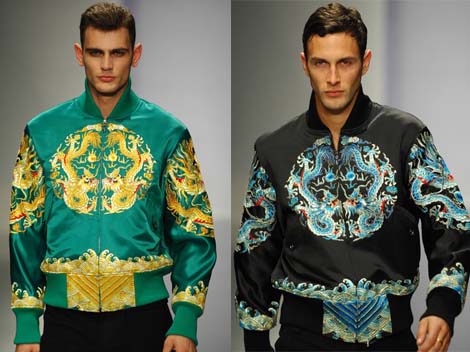
Nanjing Brocade evolved from Cai(meaning colorful) Silk Fabrics of Song Dynasty. In Yuan Dynasty, Mongolians conquered Central China. The rulers then had the tradition of decorating officer dress with gold. The boom of the Dynasty flourished gold mining, which facilitated the development of Brocade with gold and silver weaving as its main characteristics. The Brocade thus became much more well-known than all other silk products and surpassed the formers as a latecomer, and obtained a fame of "silk fabrics with highest rarity and technology" that won great favor of feudal kings and aristocrats and were also loved by minorities of Mongolia, Tibet and Uygur Nationalities. Henceforth, the three dynasties of Yuan, Ming and Qing all designated Brocade as the loyal tributes. The rulers of those dynasties set up official fabrics bureaus in Nanjing specifically for the administration and monopoly of Brocade production and marketing, which further promoted the fabrics' development and flourish. In the eras of Kangxi and Yongzheng Emperors in Qing Dynasty, the production of Brocade reached its primax. In the vicinity of Qinhuai River inhabited numerous fabrics trading households, weaving noise echoed day and night, the fabrics production volume became unprecedented. Four ancestors in three generations of the author of "Stories of Red Chamber" Cao Xueqin were appointed as executive officials of Jiangning Fabrics Bureau in Qing Dynasty for 65 years.
After the founding of New China, the Party and government paid great importance to the precious national culture and technology. Under the government's concern, Nanjing Brocade Research Institute (NBRI) was founded, and Nanjing Brocade was given great protection and development. Under the concern and support from the related central ministries and provincial and municipal departments in the past 40 years, NBRI has achieved lots of scientific results and supplied a number of technological gaps in China, making preeminent contributions to the inheritance and development of the fabrics. Having undertaken in-depth study and rectification of the historical archives, the Institute published 200 volumes of Brocade objects as well as the most comprehensive monograph on the its development history "Chronicle of Brocade". Large sized color pattern volume "Brocade Design" and black and white pattern volume "Nanjing Brocade" were also printed.





